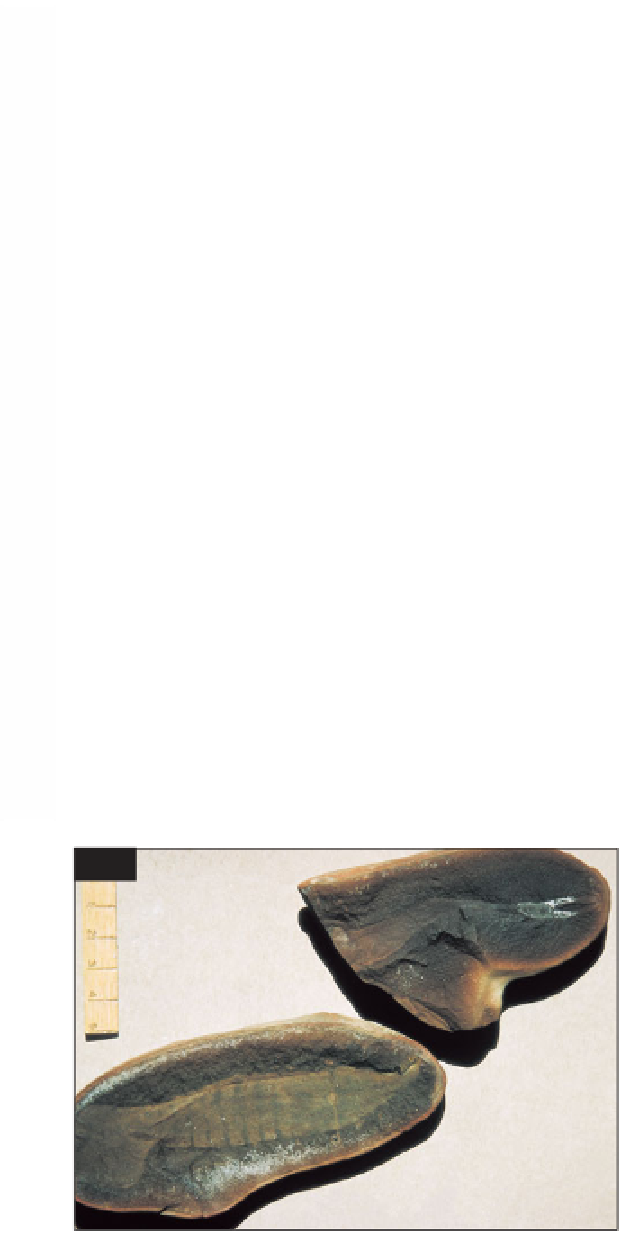Geoscience Reference
In-Depth Information
Other arthropods
Euthycarcinoids are an odd group of
apparently uniramous arthropods (those
with a single leg-branch like myriapods)
which range from the Silurian to Triassic.
Mazon Creek has three species. Another
group of arthropods of unknown affinity is
the Thylacocephala, which ranged from
Cambrian to Cretaceous. Commonly
called flea-shrimps, they may or may not
belong to the Crustacea. They have a
bivalved carapace which encloses most of
the body, and large eyes,
Concavicaris
is
quite common in Essex nodules.
apart from one crinoid specimen, the only
echinoderm found at Mazon Creek is the
holothurian (sea cucumber)
Achistrum
,
which is actually quite common in Essex
nodules. It can be distinguished from
other worm-like creatures by the ring of
calcareous plates which form part of the
sphincter at one end of the animal.
Perhaps the most interesting animal of
all at Mazon Creek is one popularly
known as 'Tully's Monster', named after
its discoverer the avid collector Francis
Tully.
Tullimonstrum gregarium
, to give it its
scientific name, ranges up to 300 mm
(12 in) long. It has a segmented, sausage-
shaped body with a long proboscis at the
anterior, which terminates in a claw with
up to 14 tiny teeth (
126
). Posteriorly,
there is a diamond-shaped tail fin. Near
the base of the proboscis is a crescentic
structure, and just behind this is a
transverse bar bearing an eye at each end.
A number of ideas have been put forward
as to the affinity of
Tullimonstrum
:
conodont animal, annelid, nemertean,
mollusk, or a group on its own.
Tullimonstrum
was clearly nektonic and
predatory, and its overall appearance,
proboscis, eyes, and tooth structure are all
Other invertebrates
Brachiopods are common in marine
sediments of normal salinity, but they are
rare in Mazon Creek nodules, being
represented only by inarticulates such as
Lingula
, which is known to prefer brackish
waters.
Lingula
is the only infaunal
brachiopod, living in a vertical burrow
into which it can retract by means of a
long, fleshy pedicle. Numerous specimens
from Pit 11 preserve
Lingula
in life
position with burrow and pedicle intact.
Like brachiopods, echinoderms are
usually found in fully marine waters and,
126
126 The Tully Monster
Tullimonstrum gregarium.
MU. Scale bar is in cm.



Search WWH ::

Custom Search